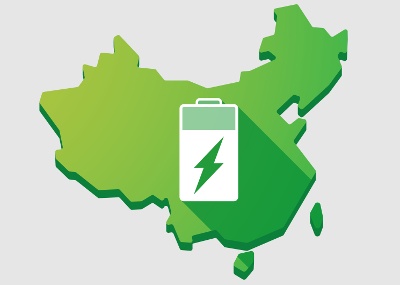Best in Manufacturing – July 9, 2017
Each Sunday, we publish a list of top articles and other content related to manufacturing in areas like quality control, product development, supply chain management, sourcing, auditing and law.
1. Why your product can suck, even though you have a great supplier
For some companies that have problems delivering a good product, their first thought might be that their production processes aren’t adequate. Or that their quality control isn’t catching problems. Maybe the production line supervisor is slacking off.  Some people, however, like Chad Xu, the co-founder and managing director of Shenzhen Valley Ventures, believe providing a good product can fail because of improper design.
Some people, however, like Chad Xu, the co-founder and managing director of Shenzhen Valley Ventures, believe providing a good product can fail because of improper design.
Xu’s company is a hardware startup accelerator, but his thoughts on design are still relevant to importers and manufacturers of any size.
Without proper design, a product quickly becomes harder to create. For instance, put yourself in the shoes of a product engineer at your manufacturing facility. Although the supplier has all the necessary production capabilities, it’s bottlenecked by your designs because they aren’t streamlined and easily understood. The engineer has a hard time translating the value of the design to the tangible world. Your product might eventually get made, but not in the most ideal, efficient way.
One telling quote from Xu regarding design is,
If it’s not properly designed inside, even Foxconn cannot deliver it.
...and that’s saying something. Foxconn, widely known as the manufacturer of Apple products, surely has the right tools to produce sophisticated goods. This goes to show that if you don’t give a supplier the right foundations (like practical designs and a clear quality control checklist), you’re diminishing your chances of success.
To learn more about product design’s importance in manufacturing, check out the full article below:
Why Product Design Is More Important Than Your Manufacturing Partner – Eva Yoo, Technode
2. China’s potential to save the American economy
One of the most commonly heard narratives describing globalization is that it has led to jobs leaving domestic shores, with little coming back in return. But in the case of Dayton, Ohio, that’s not entirely accurate.
The Fuyao Glass plant located there employs 2,000 workers. The factory represents what is called a “greenfield investment”, which essentially means a company starts operations from scratch by hiring workers from the area, buying equipment and developing the location. And Fuyao isn’t the only Chinese business investing in the U.S. The author of this article reports that,
In 2016, Chinese businesses spent $46 billion on foreign direct investment in the United States, a threefold increase from the $15 billion they spent in 2015, according to the Rhodium Group, a research firm that analyzes global investment trends. Chinese-owned firms now support more than 140,000 jobs nationwide, nine times as many as in 2009.
This investment into America is part of a larger effort by Chinese businesses looking to new places for opportunities. Chinese interest in manufacturing in America, rather than back home, is sometimes also motivated by reductions in certain costs, like electricity, land and taxes.
While labor is typically not as cheap as in China, labor costs there are rising, which makes America increasingly attractive. Additionally, for Chinese companies that sell to American companies, producing closer to their target market saves money on and avoids risks related to shipping.
If you’re curious about how Chinese companies are helping the American economy, check out the full article in the link below:
Will China Save the American Economy? – Alana Semuels, The Atlantic
3. The benefits of the Fourth Industrial Revolution for companies vs. countries
No matter where you are, there’s potential for your business if you or your partners are busy integrating the technologies of the Fourth Industrial Revolution (4IR).
What is the 4IR? Simply put, it’s the next industrial revolution that’s characterized by the use of cyber-physical systems. And one of its major advantages is that it allows businesses to transcend some of the barriers imposed by their respective country.
As this featured article mentions, the 4IR can sometimes create value in countries that otherwise have problems that overshadow it. Kenya, for example, is mentioned as a nation that has had its national competitiveness ranking drop from 48 to 81 from 2013 to 2017. And in the case of Asia, China and South Korea have “labor policies and inefficient bureaucracy…that make doing business in their countries challenging.”
As an importer or manufacturer, no matter where you source from, if you find suppliers integrating 4IR technologies into their operations, you’ve found a gem amongst the rocks. These sorts of businesses are extra special and are primed to succeed. In the realm of manufacturing, the ways businesses might integrate the 4IR are by using more of their data, augmented reality, blockchain, 3D printer spider bots (probably won’t find this one just yet) and more.
If you’d like to learn more about how the Fourth Industrial Revolution can help businesses succeed, despite national limitations, check out the full article in the link below:
Companies Benefit from the Fourth Industrial Revolution, but Do Countries? – Gary Coleman, World Economic Forum
4. Responses to copycat manufacturing
After years of spending countless nights adjusting designs, you finally arrive at your dream product. You eventually contract a factory and make the product without any major problems. But after production you soon discover that an issue has emerged: people are copying your product.
While some might say “imitation is the highest form of flattery”, you probably won’t want to hear this as the copycat product eats into your sales and dilutes your brand’s value.
Thankfully, this featured article mentions a few ways to fight copycat manufacturing:
- Threaten copycats with lower prices to demonstrate the original brand can win a price war
- Threaten copycats with lower prices so they aren’t as eager to enter the market
- Coexist with copycat manufacturers and allow them to sell to budget-conscious consumers and those that want knockoffs
- Pursue legal action
- Limit advertising of new products to hold onto “design monopoly” longer
Importers facing a situation where competitors are imitating products have these options at their disposal. Can you recommend any other ways to deter copycatting? Let us know in the comments section below!
To read more about copycat manufacturing, check out the full article in the link below:
What Should We Do About Copycat Manufacturing? – Ian Wright, Engineering.com
5. The intense fight over lithium-ion battery production
I won’t hide it: Elon Musk is one of my idols. I think he’s a harbinger of the future and is truly making the world a better place. His Gigafactory, for example, aims to produce “more lithium ion batteries annually than were produced worldwide in 2013”. Yet for all his success and vision, he’s still got competition…big competition.
 The Gigafactory plans to produce approximately 35 gigawatt-hours of battery cells every year once complete in 2018. While that metric is impressive for just one factory, collectively, factories in China will produce a staggering 120 gigawatt-hours annually by 2021.
The Gigafactory plans to produce approximately 35 gigawatt-hours of battery cells every year once complete in 2018. While that metric is impressive for just one factory, collectively, factories in China will produce a staggering 120 gigawatt-hours annually by 2021.
China’s interest in producing lithium-ion batteries isn’t without merit. They can be used in everything from cars to all sorts of portable electronics (e.g. phones, power tools, flashlights). And the effort to produce so many of them is a part of China’s grand manufacturing initiative, Made in China 2025.
It’s important to take a step back and realize that despite the intense competition between Musk, China and any other players in the battery market, a major shared end-goal is a more sustainable future. Lithium-ion batteries used in cars, for example, can take polluting vehicles off roads and help fight climate change.
Climate change aside, what’s the future end result for most importers and manufacturers? Cheaper batteries. As the scale and competition of lithium-ion battery production increases, a reduction battery price is a likely outcome. If you make portable electronic items, cars or anything else that requires a mobile power source, this development is welcome news.
To learn more about the competition in the battery market between Elon Musk and China, check out the full article in the link below:
China Is About to Bury Elon Musk in Batteries – Joe Ryan, Bloomberg
We’re constantly scanning the web for top manufacturing stories and news. If you’d like to submit an article for consideration for our weekly Best in Manufacturing, send us a message and let us know.







